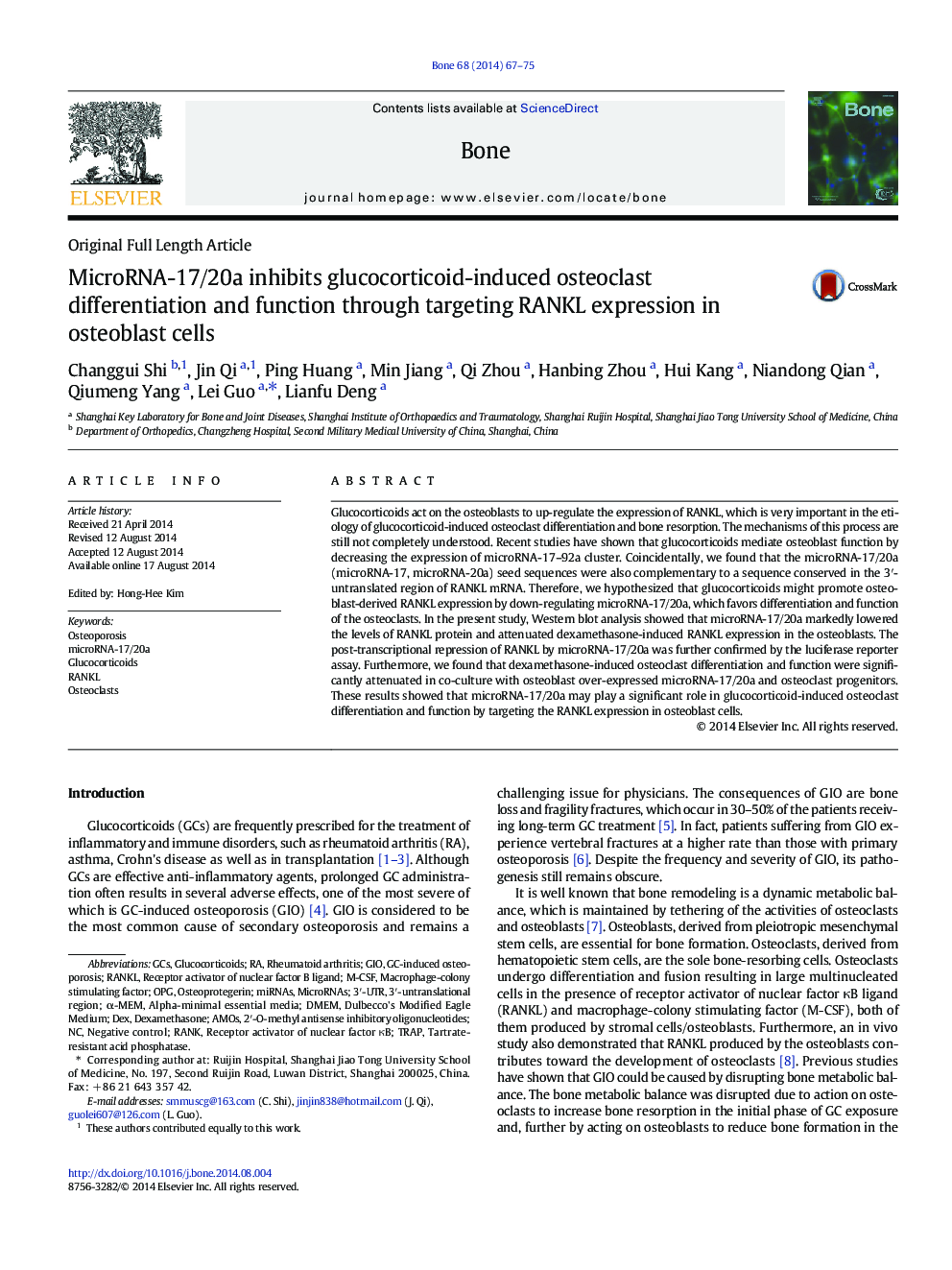| Article ID | Journal | Published Year | Pages | File Type |
|---|---|---|---|---|
| 2779193 | Bone | 2014 | 9 Pages |
•We have identified microRNA-17/20a complementary sequences in the 3'UTR of RANKL mRNA;•Dex downregulate microRNA-17/20a and RANKL is a target gene of microRNA-17/20a;•microRNA-17~20a was involved in Dex-induced osteoblasts-derived RANKL expression.
Glucocorticoids act on the osteoblasts to up-regulate the expression of RANKL, which is very important in the etiology of glucocorticoid-induced osteoclast differentiation and bone resorption. The mechanisms of this process are still not completely understood. Recent studies have shown that glucocorticoids mediate osteoblast function by decreasing the expression of microRNA-17–92a cluster. Coincidentally, we found that the microRNA-17/20a (microRNA-17, microRNA-20a) seed sequences were also complementary to a sequence conserved in the 3′- untranslated region of RANKL mRNA. Therefore, we hypothesized that glucocorticoids might promote osteoblast-derived RANKL expression by down-regulating microRNA-17/20a, which favors differentiation and function of the osteoclasts. In the present study, Western blot analysis showed that microRNA-17/20a markedly lowered the levels of RANKL protein and attenuated dexamethasone-induced RANKL expression in the osteoblasts. The post-transcriptional repression of RANKL by microRNA-17/20a was further confirmed by the luciferase reporter assay. Furthermore, we found that dexamethasone-induced osteoclast differentiation and function were significantly attenuated in co-culture with osteoblast over-expressed microRNA-17/20a and osteoclast progenitors. These results showed that microRNA-17/20a may play a significant role in glucocorticoid-induced osteoclast differentiation and function by targeting the RANKL expression in osteoblast cells.
